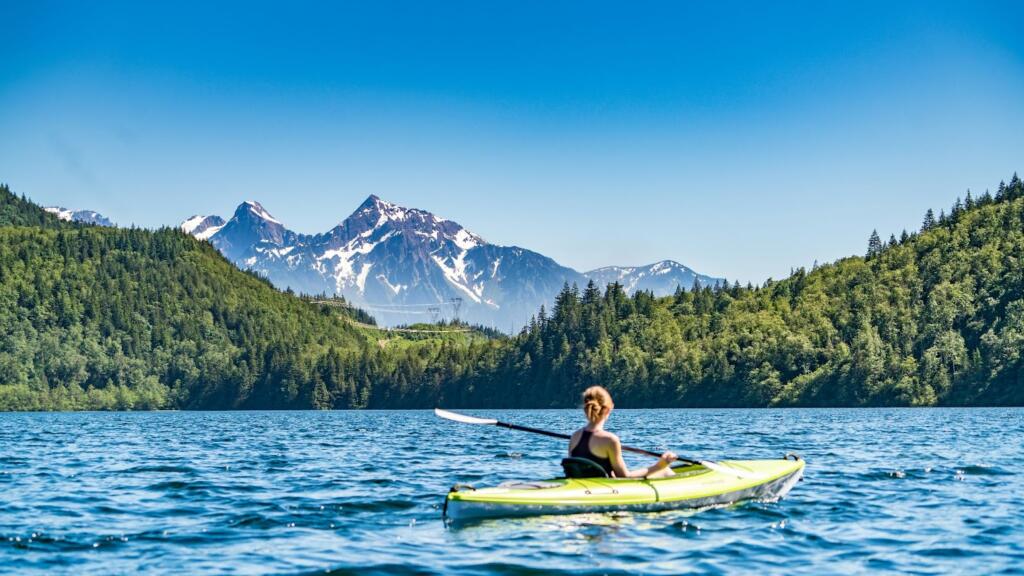Table of Contents

Outdoor sports have surged in popularity as people seek meaningful connections with nature through activities like hiking, rock climbing, camping, kayaking, and surfing. Beyond physical fitness, they challenge mental resilience, foster environmental awareness, and cultivate community, offering diverse opportunities that accommodate varying fitness levels and lifestyles.
Introduction to Outdoor Adventures
Outdoor adventures involve recreational activities conducted outside, usually in natural environments like forests, mountains, rivers, or parks. Examples include hiking, camping, kayaking, rock climbing, backpacking, fishing, hunting, mountain biking, canoeing, and more specialised activities such as canyoning or hang gliding.
Types of Outdoor Sports
Outdoor sports cover a wide variety of physical activities performed in natural or open-air environments. They can be grouped into several categories based on their setting and the skills required. The New Zealand outdoors is known to accommodate many of them:
- Air sports: Activities that take place in the air, often requiring specialised equipment and training. Examples include hang gliding, paragliding, skydiving, and hot air ballooning.
- Water sports: Conducted on or in water bodies such as lakes, rivers, or oceans. These include kayaking, canoeing, rafting, surfing, stand-up paddleboarding, swimming, snorkeling, scuba diving, and jet skiing.
- Land-based sports: Performed on land and often involve running, cycling, climbing, or ball games. Examples include hiking, mountain biking, trail running, rock climbing, skateboarding, tennis, and team sports like football, volleyball, rugby, and baseball.
- Winter sports: Conducted on snow or ice surfaces, such as skiing, snowboarding, ice skating, sledding, and snowmobiling.
Preparing for Outdoor Activities
Proper preparation is essential for a safe and enjoyable outdoor experience. Here are key steps to consider:
- Research your destination, including terrain, weather, regulations, wildlife, and hazards. For example, if hiking in New Zealand’s Tongariro National Park, check the Department of Conservation (DOC) website for track closures and weather alerts.
- Plan your route and inform participants, including safety guidelines, emergency procedures, and meeting points. Use apps like AllTrails or ViewRanger to map your route and share it with a trusted contact.
- Pack appropriate gear such as hiking boots, a kayak, a tent, or ropes. Dress in layers to adapt to changing weather, including waterproof and insulating clothing.
- Bring essential safety equipment, including helmets, flotation devices, first aid kits, navigation tools (GPS, map, compass), and communication devices. Garmin GPS and Suunto compasses are reliable choices.
- Carry enough food and water, know water sources, and how to purify water if needed. Options include SteriPEN UV purifiers or Sawyer Mini filters.
- Create a safety plan with start and end points, emergency contacts, communication protocols, and contingency plans for hazards like bad weather or injuries. Inform a trusted person of your itinerary and expected return.
- Be aware of local regulations such as fire restrictions, protected wildlife zones, and camping rules. Some areas require permits or restrict fires during dry seasons. Always check with local authorities or park offices.
Outdoor Sports for Thrill-Seekers
These extreme sports involve high physical risk, adrenaline, and skill, pushing participants beyond usual limits for intense excitement and challenges. Among air sports, skydiving is the most popular, involving jumping from an aircraft and performing maneuvers before deploying the parachute.
Land-based extreme sports include mountain biking – high-speed racing and tricks on rough terrain or ramps – and rock climbing, scaling natural rock faces in challenging conditions. Water-based extreme sports include kayaking and rafting, navigating rapid rivers with skill. Scuba and cave diving are popular among ocean enthusiasts, exploring underwater environments, including hazardous caves.
FAQs
What are the benefits of outdoor sports?
Studies show outdoor sports like trail running can increase VO2 max by 15%, improve muscle tone, and boost cardiovascular function. Exposure to sunlight during these activities raises vitamin D levels, while research links nature time to 30% lower cortisol, improved mood, and relief from daily stress and anxiety.
What is the most popular outdoor sport?
Football (soccer) remains the most popular outdoor sport worldwide in 2025, with over 4 billion fans. It draws huge audiences through major events like the FIFA World Cup and regional tournaments such as the ASEAN Cup.
What is the best outdoor sport?
The best outdoor sport depends on personal preference. Popular and accessible options in 2025 include trail running, gravel biking, paddle tennis, and pumptrack cycling. Ultimately, the best sport is one that suits your interests, skills, and lifestyle.
What are considered outdoor sports?
Outdoor sports are physical activities performed outside, often in natural settings. They include hiking, rock climbing, camping, kayaking, surfing, cycling, fishing, and running. These sports promote fitness, mental well-being, and social interaction while allowing people to enjoy the outdoors.











